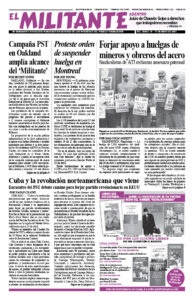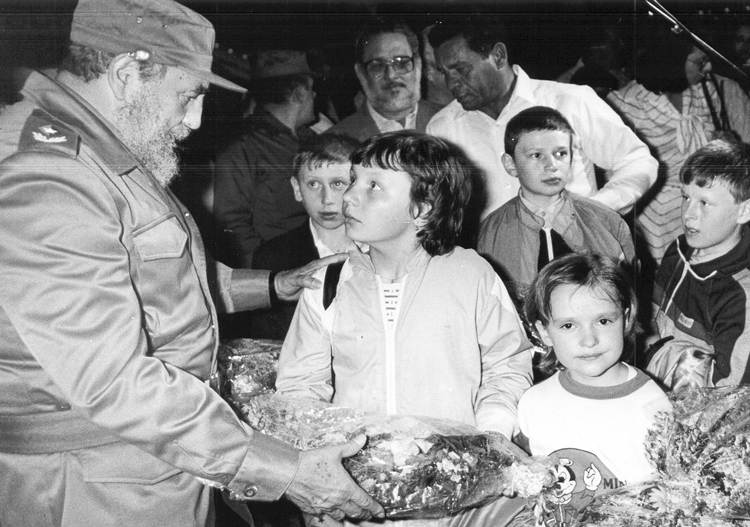Thirty-five years ago, the worst nuclear disaster in history occurred at the Chernobyl power plant in Ukraine, then part of the Soviet Union, with devastating and long-lasting social and environmental consequences. On April 26, 1986, a test went terribly wrong. Reactor 4 exploded, blowing the roof off. The active core began to melt and an intense 10-day fire broke out, releasing clouds of radioactive dust into the atmosphere.
A more catastrophic meltdown was only averted by the self-sacrificing efforts of thousands of “liquidators” — cleanup workers, soldiers and pilots who volunteered, or were ordered, to contain the disaster. The plant’s firemen, the first to go in, were given no protective gear. Within three months at least 31 workers died from the radiation.
Untold thousands more died from long-term effects of cancer and other radiation illnesses. The unplanned evacuation of tens of thousands of people living in the surrounding area was delayed for days, as Stalinist officials in Moscow and locally tried frantically to cover up the calamity. Evacuations in Pripyat weren’t ordered for over a day. They were told they’d only be gone for a couple days.
Invisible clouds of radioactive dust were carried by winds from Ukraine and Russia across Europe. The worst fallout was in neighboring Belarus, but it also reached 700 miles to Scandinavia. The explosion released 400 times more radiation than Washington’s criminal atomic bomb assault on the Japanese population in Hiroshima and Nagasaki in 1945.
The containment of the ruins, which will be radioactive for centuries, remains a serious challenge today.
A steel and concrete shelter was hastily erected to encase the site, which soon began to deteriorate. A huge outer covering was only finished in 2019. Taking steps to remove the pile of radioactive material inside will take until 2065!
The whole disaster was caused by Stalinist misrule and contempt for working people. Soviet officials had decided to build the reactor without a containment structure or other safety features that would have impeded any release of radiation. Then, when the reactor exploded, Moscow did all in its power to cover it up. The resulting social crisis was one factor in the collapse of the Stalinist regime in Moscow and the disintegration of the Soviet Union in 1991.
Stalinist officials kept Chernobyl’s three other reactors running for years. The last two units were closed by the now independent Ukrainian government in 1996 and 2000, when public pressure over thyroid cancers among children finally forced officials to act.
Over 8.4 million people were exposed to Chernobyl’s radiation. Some 350,000 people were eventually relocated from scores of towns in Ukraine and Belarus. An official 18-mile-wide exclusion zone still surrounds the radioactive plant.
John Studer, the current editor of the Militant, went to the Chernobyl area as part of a reporting team to Ukraine after the powerful working-class uprising called the Maidan that overthrew the Moscow-backed government of Viktor Yanukovych in 2014. Studer met with some workers who had served as liquidators, including union rail workers and coal miners, all members of the Free Trade Unions of Ukraine.
At the request of the nuclear workers union, Studer visited Chernobyl and the village where workers at the plant now live — Slavutych — after Pripyat became uninhabitable.
Cuba’s internationalist response
In stark contrast to the Stalinist regime’s callous disregard for the lives and health of working people in the region, the revolutionary government of Cuba responded rapidly with offers of support and help. The Ukraine government agreed. Between 1990 and 2011, Cuba provided complete medical care free of charge to over 25,000 Chernobyl victims, mainly children from Ukraine. This shows the Cuban Revolution’s unbroken record of internationalist working-class solidarity.
“Cuba played a really big role in helping those stricken by the nuclear disaster in Chernobyl, especially for such a small country,” Liliya Piltyay told Studer in Kyiv. She had been a Young Communist leader who organized to get Ukrainian children and others in need of medical attention to the island.
When the first planeload of the sickest children arrived in Havana, they were personally greeted by Fidel Castro, central leader of the Cuban Revolution. He “went into a huddle with other government representatives right there, and by the time the second plane landed three hours later,” Piltyay said, “he announced that Cuba would take 10,000 children from Ukraine, Belarus and Russia.”
In less than three months, 7,000 Cuban volunteer workers helped transform the Tarará youth camp, on the coast near Havana. It is now the largest medical care and rehabilitation center in the world for children from other countries.
Dr. Julio Medina, director of Pediatric Hospital of Tarará, was one of those interviewed on the 2006 documentary, “Chernobyl and Cuba.” (You can order or watch the video at themilitant.com.)
He explained that “even in the most difficult moments of the Cuban economy” during the Special Period, “when our enemies did everything possible to choke public health in our country,” we kept the program going. Medina was referring to Washington’s efforts to step up its punishing decadeslong trade embargo, during the period of severe shortages after Cuba lost most of its aid and trade when the Soviet Union collapsed.
In 2012 the Ukrainian government stopped funding air travel for the program. In May 2015, more than 150 people, from youth still in line to go to Tarará to Ukrainian doctors and former health ministers, attended a conference in Kyiv titled “Children of Tarará — Children of Ukraine” that Piltyay helped organize. They appealed to the Ukrainian government to resume funding the “Children of Chernobyl” program.
“Cuba is willing to continue the program,” Piltyay told Studer. “Some people still get care in Cuba, but they have to raise the funds to cover transportation themselves.”
“Cuba was the only country in the world to organize a program like this,” she said. It “showed the Cuban Revolution is alive and that solidarity with Cuba is very important.”


